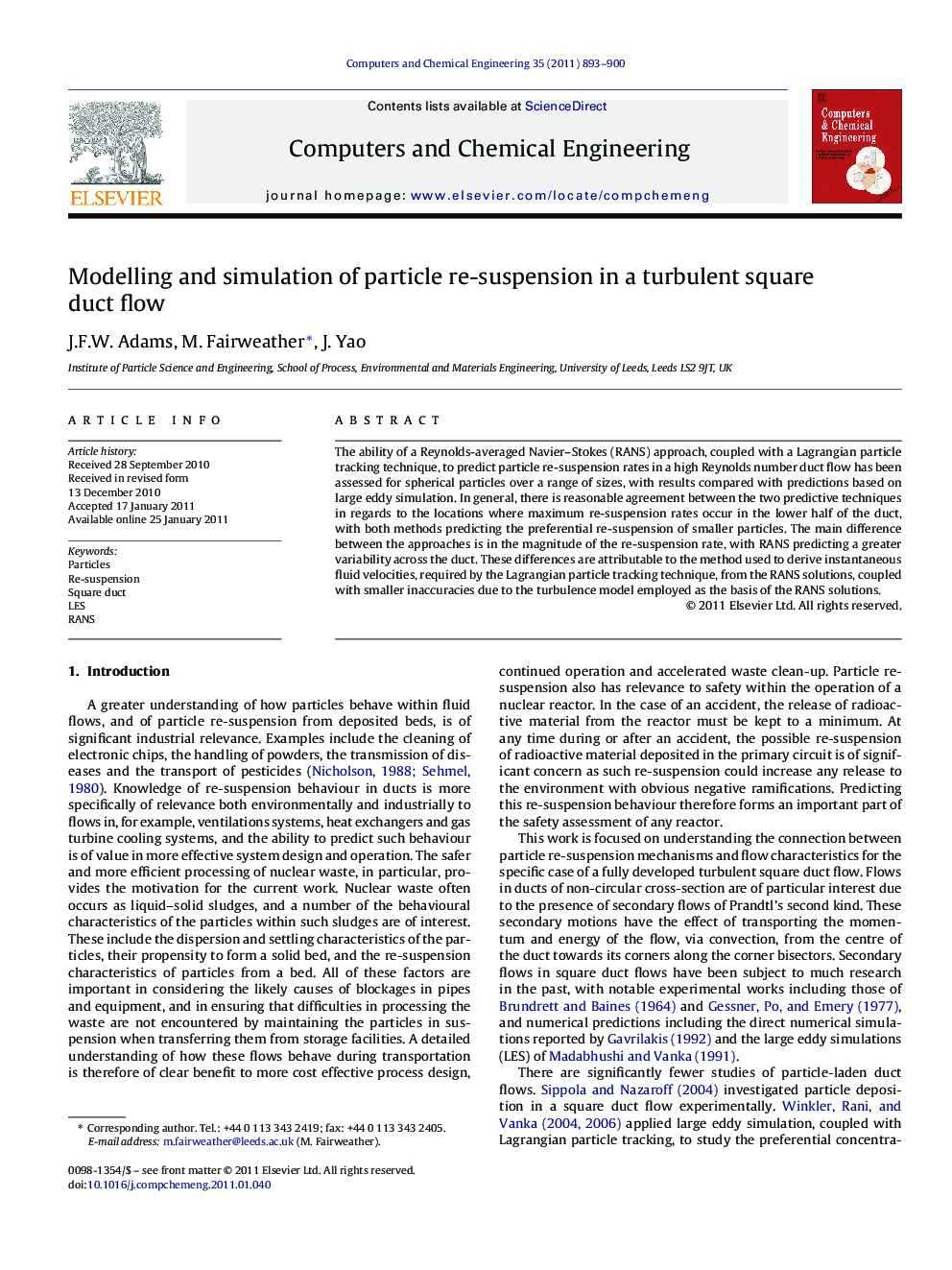| Article ID | Journal | Published Year | Pages | File Type |
|---|---|---|---|---|
| 173230 | Computers & Chemical Engineering | 2011 | 8 Pages |
The ability of a Reynolds-averaged Navier–Stokes (RANS) approach, coupled with a Lagrangian particle tracking technique, to predict particle re-suspension rates in a high Reynolds number duct flow has been assessed for spherical particles over a range of sizes, with results compared with predictions based on large eddy simulation. In general, there is reasonable agreement between the two predictive techniques in regards to the locations where maximum re-suspension rates occur in the lower half of the duct, with both methods predicting the preferential re-suspension of smaller particles. The main difference between the approaches is in the magnitude of the re-suspension rate, with RANS predicting a greater variability across the duct. These differences are attributable to the method used to derive instantaneous fluid velocities, required by the Lagrangian particle tracking technique, from the RANS solutions, coupled with smaller inaccuracies due to the turbulence model employed as the basis of the RANS solutions.
